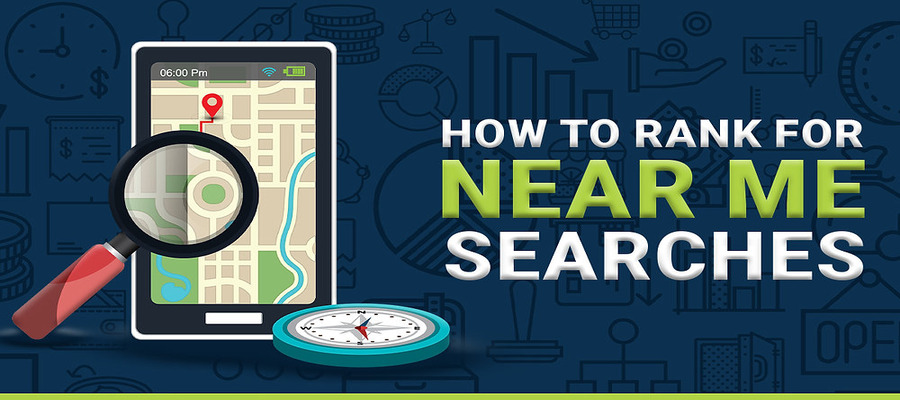How to Optimize for ‘Top Colleges Near Me’ Search Queries
Summary: Search queries like “top colleges near me” have become a key part of how students discover and evaluate educational institutions. With location-based intent growing rapidly, colleges must adapt by implementing hyperlocal SEO strategies, optimizing for mobile and voice search, and creating geo-targeted content. Understanding how Google interprets proximity, relevance, and authority can significantly influence local rankings. From managing citations to leveraging reviews and local schema, every element plays a role. Mastering these areas can help institutions gain a competitive edge in their local digital landscape.
Key Takeaways
- “Near me” searches are crucial for attracting high-intent local student traffic.
- Google ranks colleges based on relevance, proximity, and online authority signals.
- Hyperlocal keyword research boosts visibility in location-specific student queries.
- Google Business Profile and consistent NAP details improve local discoverability.
- Tracking local SEO metrics helps refine the strategy and measure the real impact on enrollment.
“Top colleges near me” five simple words that could shape your admissions pipeline. With the leading era of hyperlocal digital landscape, students and parents no longer wait for referrals or advertisements; they rely on search engines to find trusted institutions nearby. If your college isn’t showing up in those local search results, chances are, your competitors are costing you valuable enrollments.
Many institutions struggle to appear in these “near me” searches due to a lack of local SEO strategies, poor mobile optimization, or inconsistent online presence. Let’s reveal proven tactics to help your college stand out in location-based queries. From hyperlocal keyword research to Google Business Profile optimization, you’ll learn how to attract more local students, build digital trust, and stay ahead in the competitive education space.
Table of Contents
Toggle- Why “Near Me” Searches Matter for Colleges?
- Understanding the Search Intent Behind “Top Colleges Near Me”
- How Google Understands 'Near Me' Searches?
- Top 11 “Near Me” Optimization Tips at a Glance
- How to Optimize Your College Website for ‘Near Me’ Keywords?
- Conduct Hyperlocal Keyword Research
- Create Location-Optimized Pages
- Google Business Profile Optimization
- Optimize for Mobile and Voice Search
- Local Schema Markup
- Incorporate ‘Near Me’ Keywords in On-Page SEO
- Local Backlinks and Citations
- Use Reviews and Testimonials
- Publish Locally-Relevant Blog Content
- Leverage Social Media Geo-Tagging
- Monitor and Update NAP Consistency
- Tracking and Measuring Success
- Common Mistakes to Avoid
- How Agha DigiTech Helps Colleges Rank for “Near Me” Searches?
- Final Thoughts
- Frequently Asked Questions (FAQ's)
Why “Near Me” Searches Matter for Colleges?

The digital behavior of students has evolved today’s prospective applicants begin their college journey not with campus visits, but with quick local searches on their phones. Search engines like Google have reported that queries containing “near me” have grown over 500% in the past few years, with education-related searches among the top categories. This shift signals a new norm: students want quality education that’s accessible and close to home.
Colleges that overlook this trend risk falling behind in both visibility and admissions. A 2025 study shows that 78% of students who perform a local college search take action within a week, whether it’s scheduling a campus visit, submitting an inquiry, or applying online. As AI-powered search continues to prioritize proximity, relevance, and user engagement, colleges must adopt “near me” optimization as a core part of their digital strategy. Institutions that act now will be better positioned to capture local interest, convert it into enrollment, and build long-term community trust.
Understanding the Search Intent Behind “Top Colleges Near Me”
When a user types “top colleges near me” into Google, they’re not casually browsing they’re expressing a clear, high-intent need. This phrase typically signals that the student or parent is actively looking for reputable institutions within a specific geographic area. Understanding this intent is key to crafting content and SEO strategies that align with what users actually want whether that’s academic reputation, affordability, distance from home, or program availability.
Many colleges miss the mark by focusing solely on broad, national keywords, ignoring the local intent that drives most enrollment decisions today. A professional SEO agency can help decode this search behavior and structure your digital presence accordingly. From optimizing landing pages to tailoring local content and reviews, agencies ensure that your website speaks directly to what users are searching for. By aligning your site with this intent, your college not only gains higher visibility but also builds greater trust with prospective students right from the first search interaction.
How Google Understands 'Near Me' Searches?

Google’s understanding of “near me” searches has evolved far beyond just matching keywords. Today, its algorithm factors in a user’s precise location, search history, device type, and even time of day to deliver hyper-relevant, local results. When someone searches for “top colleges near me,” Google doesn’t just display well-known institutions it prioritizes those with strong local signals, optimized Google Business Profiles, and locally relevant content.
This is where the debate of Local SEO vs. Global SEO becomes especially relevant for educational institutions. While global SEO helps build nationwide or international visibility, it often fails to capture the attention of nearby searchers ready to take action. Local SEO, on the other hand, focuses on proximity-based intent ensuring your college appears when students are actively seeking nearby options. Google rewards colleges that have accurate NAP details, local backlinks, high-quality reviews, and consistent citations, making local optimization critical for enrollment success in your surrounding communities.
Top 11 “Near Me” Optimization Tips at a Glance
Before diving deep into each local SEO tactic, here’s a snapshot of the most effective strategies colleges can use to rank for “top colleges near me” searches. This quick-reference table outlines the top 11 methods, what they involve, and how they enhance your local online visibility in 2025.
Optimization Tip | What It Is | How It Helps Your College |
Hyperlocal Keyword Research | Finding city- or neighborhood-specific keywords students actually search for. | Drives targeted traffic by matching real search intent in your area. |
Location-Optimized Pages | Dedicated landing pages for specific cities or regions. | Boosts rankings in multiple geographic areas; improves content relevance. |
Google Business Profile Optimization | Enhancing your college’s GBP with accurate info, photos, and reviews. | Increases visibility in Google Maps, voice search, and local pack listings. |
Mobile & Voice Search Optimization | Making your website mobile-friendly and voice-search ready. | Captures on-the-go traffic and voice-based queries from prospective students. |
Local Schema Markup | Adding structured data to your site for Google’s better understanding. | Improves chances of appearing in rich snippets and location-based search features. |
“Near Me” Keyword Placement | Including “near me” terms naturally in titles, content, and meta tags. | Aligns on-page content with high-intent local search queries. |
Local Backlinks & Citations | Getting mentioned and linked from trusted local sources and directories. | Boosts local domain authority and trust signals. |
Reviews & Testimonials | Encouraging students to leave reviews and showcasing them on your site. | Builds trust, improves SEO signals, and influences student decisions. |
Local Blog Content | Publishing articles related to your city, students, or community topics. | Engages local audience and ranks for long-tail, location-based keywords. |
Social Media Geo-Tagging | Tagging your campus or location in social media content. | Expands local reach on Instagram, Facebook, and YouTube search/discovery feeds. |
NAP Consistency | Keeping your Name, Address, and Phone identical across platforms. | Ensures Google trusts your listings and ranks your institution higher in local SERPs. |
How to Optimize Your College Website for ‘Near Me’ Keywords?
With rising competition and instant search behavior, colleges need to align their digital presence with how students search locally. One of the most impactful tactics in SEO for education industry is optimizing for “near me” keywords. This approach helps your college show up when prospective students search for nearby institutions. Below are essential strategies every college should apply to improve visibility and gain a competitive edge in local search results.
Conduct Hyperlocal Keyword Research
Hyperlocal keyword research is the process of finding keywords that reflect how students search for colleges in specific cities, neighborhoods, or even near landmarks. These could be terms like “top MBA colleges near Andheri” or “affordable science colleges in Noida.” Using tools like Google Keyword Planner, SEMrush, or Ubersuggest, you can identify long-tail keywords with strong local intent and low competition. Including these phrases naturally across your content ensures better alignment with local searches, driving quality traffic from students ready to take action in their area.
Impact on Colleges:
- Increases visibility for local searches
- Attracts high-intent students in your region
- Reduces competition from national or global institutions
Create Location-Optimized Pages
Location-optimized pages are unique landing pages tailored for specific cities or regions where your college operates or targets students. These pages should feature localized keywords, contact details, Google Maps embeds, city-specific testimonials, and program highlights that resonate with that audience. This approach helps search engines understand which locations you serve and makes it easier for students to find information relevant to their area. It’s especially useful for multi-campus colleges or those looking to establish a strong presence in new local markets.
Impact on Colleges:
- Enhances SEO relevance for specific locations
- Boosts trust with locally-based prospects
- Supports multi-campus institutions with targeted reach
Google Business Profile Optimization
A fully optimized Google Business Profile (GBP) helps your college show up in the local pack, Maps, and voice search results. Fill in all fields accurately business name, address, phone number, website, categories, hours, photos, and descriptions. Encourage student reviews, post regular updates, and answer FAQs to engage potential applicants. GBP is a vital part of your local SEO strategy as it confirms your institution’s legitimacy and makes it easier for students to contact or visit your campus directly from search.
Impact on Colleges:
- Increases visibility in map results and mobile searches
- Builds credibility through verified local presence
- Encourages student inquiries and visits directly from search
Optimize for Mobile and Voice Search
With most “near me” searches now occurring on smartphones and via voice assistants, it’s crucial that your website is mobile-optimized. This means fast loading speeds, responsive design, and intuitive navigation. Voice search optimization involves using conversational content and answering common questions in a structured, natural way. Think phrases like “Which is the best law college near me?” These optimizations not only enhance usability but also help your site rank for voice-triggered queries, which are becoming increasingly common among students on the go.
Impact on Colleges:
- Captures mobile-first and voice search audiences
- Improves site usability and engagement rates
- Drives instant actions like calls or campus directions
Local Schema Markup
Local schema markup is structured data you add to your website’s code to help search engines understand your content better. For colleges, this means implementing the CollegeOrUniversity schema type along with detailed address, reviews, campus images, course offerings, and contact info. Schema improves your eligibility for rich results like ratings, maps, and FAQs on Google’s SERP. It also strengthens your authority for local intent searches by providing Google with clear, machine-readable information that reinforces your college’s location and services.
Impact on Colleges:
- Boosts chances of featured snippets and enhanced listings
- Improves search engine understanding of your campus data
- Increases visibility in voice and “zero-click” searches
Incorporate ‘Near Me’ Keywords in On-Page SEO
On-page SEO is about making sure every part of your website speaks the language of your users. For local optimization, you need to naturally include “near me” variations in meta titles, meta descriptions, headings, and body content. For example, instead of “Best College Courses,” use “Best College Courses near Rajaji Nagar.” Use these keywords contextually to reflect how users search, not just to rank. This helps search engines match your content with location-based searches, improving your local ranking potential.
Impact on Colleges:
- Enhances alignment with local search intent
- Boosts local page rankings and organic traffic
- Improves click-through rates with relevant meta descriptions
Local Backlinks and Citations
Local backlinks links from community websites, local education directories, and news outlets strengthen your college’s authority in a specific region. Citations, which are mentions of your institution’s name, address, and phone number across trusted directories like JustDial, Sulekha, or CollegeDunia, validate your local presence. Google uses these signals to verify your institution’s legitimacy. The more accurate and consistent your citations and backlinks, the higher your chances of ranking in location-specific search results, especially in competitive academic markets.
Impact on Colleges:
- Builds local trust and authority
- Improves SERP rankings in your region
- Strengthens brand awareness in local communities
Use Reviews and Testimonials
Online reviews are a powerful form of social proof that impact both local SEO and enrollment decisions. Encourage students, alumni, and even parents to leave authentic reviews on platforms like Google, Facebook, CollegeDekho, and CollegeDunia. Testimonials can also be embedded on your website using review schema to enhance search appearance. Prospective students are more likely to trust an institution with positive, visible feedback, making this one of the most influential strategies in your digital marketing arsenal.
Impact on Colleges:
- Enhances social proof and brand trust
- Increases click-throughs and on-site conversions
- Positively impacts local search rankings
Publish Locally-Relevant Blog Content
Creating blogs tailored to your college’s city, student demographics, or local happenings improves both engagement and local SEO. Write about topics like “Career Opportunities After BBA in Pune” or “Top 5 Events Happening at Our Kolkata Campus.” These blog posts help you capture long-tail, location-based search traffic and show that your college is active in the community. Adding internal links, local keywords, and structured formatting further boosts your content’s discoverability.
Impact on Colleges:
- Attracts highly targeted organic traffic
- Strengthens local brand identity
- Builds engagement with students and parents
Leverage Social Media Geo-Tagging
Geo-tagging social media content ensures your posts appear in local discovery feeds. When promoting events, student life, or campus facilities, tag your location on Instagram, Facebook, and YouTube Shorts. Use local hashtags along with geotags to increase reach within your community. Prospective students browsing through location-tagged content are more likely to discover your college and engage with it especially when they see real-time, relatable visuals from current students and faculty.
Impact on Colleges:
- Expands local visibility across social platforms
- Increases engagement from nearby audiences
- Drives traffic from social to website or inquiry forms
Monitor and Update NAP Consistency
NAP stands for Name, Address, and Phone number, and it must remain identical across all online platforms your website, directories, social media profiles, and Google Business Profile. Even small discrepancies can confuse search engines and damage your local rankings. Use tools like BrightLocal or Moz Local to audit and update your NAP regularly. Ensuring consistency not only builds trust with search engines but also assures prospective students that your information is reliable and current.
Impact on Colleges:
- Prevents ranking drops due to inconsistent info
- Builds trust with search engines and users
- Ensures accurate information across digital touchpoints
Tracking and Measuring Success
Optimizing for “near me” search queries is only half the battle measuring your efforts is what turns strategy into results. By tracking the right metrics, your institution can evaluate what’s working, spot improvement areas, and refine campaigns for better performance. Here’s a breakdown of the key local SEO metrics every college should monitor to gauge the impact of its “near me” optimization strategy.
Metric | What It Measures | How to Calculate |
Local Keyword Rankings | Your website’s position in SERPs for geo-specific and “near me” search terms. | Use tools like SEMrush, Ahrefs, or Google Search Console to track rankings by keyword and location. |
Google Business Profile Insights | Interactions with your Google Business Profile views, clicks, calls, directions. | Check GBP dashboard under “Performance” section for detailed monthly insights. |
Organic Traffic by Location | Number of users visiting from targeted cities/regions. | Use Google Analytics → Audience → Geo → Location → Add city-level filters. |
Click-Through Rate (CTR) | Percentage of users who clicked your link after seeing it in local search. | (Clicks ÷ Impressions) × 100; available in Google Search Console or local campaign reports. |
Bounce Rate on Local Pages | % of visitors who leave without interacting with your local landing pages. | Use Google Analytics → Behavior → Site Content → Landing Pages → Filter by URL. |
Mobile vs. Desktop Traffic | Breakdown of how many visitors come from mobile vs desktop devices. | In GA4: Go to Reports → Tech → Tech Overview → View by Device Category. |
Review Volume & Rating Trends | Number and average rating of online reviews. | Check your Google Business Profile, Facebook, or review sites like CollegeDunia. |
Citations Consistency Score | Accuracy of your college’s NAP (Name, Address, Phone) across the web. | Use tools like Moz Local, BrightLocal, or Yext to scan and compare citation data. |
Goal Conversions by Location | Form fills, inquiries, or applications submitted from different regions. | Set up geo-based goals in GA4 or use UTM-tagged URLs and conversion tracking. |
Social Engagement by Geo-Tag | Interactions (likes, shares, comments) on location-tagged social media content. | View analytics on Instagram, Facebook, or YouTube; filter posts with geo-tags. |
Consistently tracking these metrics is essential for evaluating your local SEO performance. Accurate digital marketing ROI measurement helps colleges understand what’s working, where to improve, and how to allocate resources effectively for maximum local visibility and student engagement.
Common Mistakes to Avoid
Despite good intentions, many institutions struggle with local SEO due to common, avoidable mistakes. To fully benefit from SEO services for education industry, it’s crucial to identify and correct these issues early. Leveraging the right SEO tools can help colleges uncover these gaps and improve their chances of ranking in “near me” search results. Here are the most frequent errors that can impact your local visibility and how to avoid them.
- Ignoring mobile optimization: With most “near me” searches happening on smartphones, a non-mobile-friendly site can lead to poor user experience, lower rankings, and lost admission opportunities.
- Missing or incomplete Google Business Profile: An unverified or outdated Google Business Profile means your college won’t appear in map results or local packs, significantly lowering visibility for potential applicants.
- Inconsistent NAP details: Having mismatched name, address, and phone number across directories confuses both users and search engines, weakening local SEO signals and reducing trust in your institution.
- Lack of location-based content: Content that doesn’t include geo-specific references fails to connect with local intent, reducing your chances of appearing in searches from nearby prospective students.
- Overusing or stuffing “near me” keywords: Repeating “near me” unnaturally can lead to keyword stuffing penalties and damage the user experience, harming both rankings and credibility.
- Neglecting reviews and ratings: Ignoring reviews or failing to encourage them results in weak social proof, which can influence both your local ranking and student decision-making.
- No schema implementation: Without local schema markup like CollegeOrUniversity, your pages may be skipped in rich results or misunderstood by search engines, limiting local discoverability.
- Failing to track local metrics: Not monitoring keyword performance, traffic sources, or GBP actions makes it impossible to measure ROI or adjust strategies based on real-time performance data.
How Agha DigiTech Helps Colleges Rank for “Near Me” Searches?
Ranking for “top colleges near me” is no longer optional it’s essential for institutions that want to stay competitive in an increasingly localized digital landscape. At Agha DigiTech, we specialize in providing tailored digital marketing and SEO solutions for the education industry, helping colleges and universities dominate local search results and attract more qualified leads from their immediate region.
Our team starts by conducting detailed hyperlocal keyword research and competitor analysis to identify exactly how students are searching in your area. We then implement a comprehensive local SEO strategy that includes Google Business Profile optimization, location-based landing pages, mobile and voice search readiness, and structured schema markup to ensure search engines understand and prioritize your content.
But we don’t stop there. With ongoing performance tracking, review management, and citation building, Agha DigiTech ensures your institution consistently ranks high in “near me” searches. Our strategies are designed not only to increase visibility but also to convert interest into enrollments turning local intent into real campus growth.
Final Thoughts
Ranking for “top colleges near me” is essential for attracting students who are actively searching for institutions in their area. Without a strong local SEO strategy, colleges risk being overlooked in favor of competitors with better digital visibility.
Agha DigiTech helps colleges strengthen their local presence through precise SEO tactics, optimized content, and geo-targeted strategies that drive real results. From managing Google Business Profiles to creating location-specific landing pages, we focus on actions that convert searches into enrollments.
Contact Us today to discover how our Local SEO services can help your college rank higher, engage better, and enroll smarter.
Frequently Asked Questions (FAQ's)
What content should a “near me” page include?
A strong “near me” landing page should include local keywords in titles, a campus map, neighborhood-specific testimonials, contact information, and program highlights relevant to that area. Add schema markup and metadata to signal local relevance. These pages help search engines and users quickly identify your campus’s geographic focus.
How many “near me” keywords should I target?
Target 8–15 geo-modified, high-intent keywords like “engineering colleges near Sector 62” or “MBA programs near Koramangala.” Choose keywords with search volume and low competition. Avoid keyword stuffing, and monitor performance using SEO tools. Adjust content based on evolving local search behavior and seasonal demand fluctuations.
Should I optimize separately for mobile and desktop?
Yes. Mobile optimization is essential since most “near me” queries happen on smartphones. Ensure responsive design, fast loading speed, mobile-friendly CTAs, and structured content for voice search. While desktop still matters, mobile performance directly impacts your visibility, user experience, and conversions in local search environments.
Do single-campus colleges rank as well as multi-campus institutions?
Absolutely. Single-campus colleges can rank highly if they execute strong local SEO strategies. Optimizing GBP, maintaining NAP consistency, generating local reviews, and earning nearby backlinks help level the playing field. Search engines prioritize local relevance and content quality over institutional size or the number of campuses.
Are location-based blog posts worth the effort?
Yes, location-based blog posts significantly boost visibility for hyperlocal queries. Writing about regional events, alumni success in nearby cities, or local education trends not only supports SEO but also builds community connection. This content drives long-tail traffic, improves engagement, and reinforces your college’s presence in local search.





